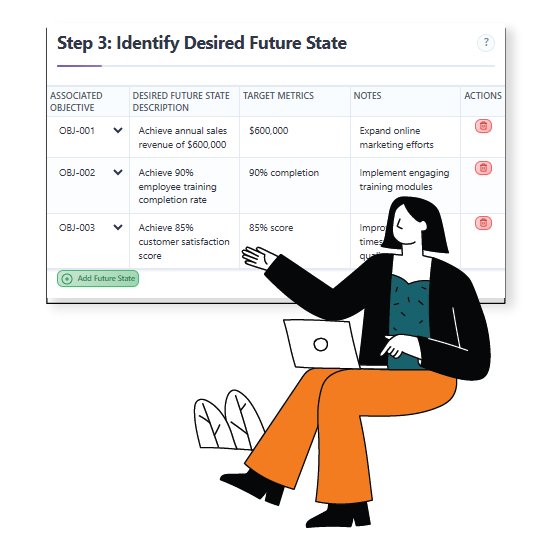Now Reading: Closing the Loop: The Importance of Post-Analysis Follow-Up
-
01
Closing the Loop: The Importance of Post-Analysis Follow-Up
Closing the Loop: The Importance of Post-Analysis Follow-Up
After meticulously conducting a gap analysis and building a comprehensive action plan, it’s easy to feel the work is done. However, a strategic document is only as valuable as its execution. This is where the final, often overlooked, phase of the process begins. Closing the loop transforms your plan from a static blueprint into a dynamic, living strategy. It’s the critical step that ensures your efforts are not only implemented but also monitored, measured, and adjusted for long-term success.
From Strategic Insights to Sustainable Results

Many organizations conduct a gap analysis, meticulously define the gap, and build a detailed action plan. But too often, they stop there, treating the exercise as a one-time event. This is a critical mistake. A gap analysis is not the finish line; it is the starting point of a continuous cycle of improvement. Without a dedicated follow-up process, even the most brilliant strategies can fail.
The final, and arguably most important, phase of gap analysis is to actively “close the loop” by monitoring, measuring, and adapting your plan to ensure the desired outcomes are not just achieved, but sustained over time.
The Danger of a ‘One-and-Done’ Mindset
A gap analysis that isn’t followed up is little more than an academic exercise. The world is constantly changing, and what was true at the time of your analysis may not be true three or six months later. Without a commitment to continuous monitoring, you risk having your action plan become irrelevant. This “one-and-done” approach leads to a stagnation of progress and can erode team morale as people see their hard work and insights go to waste. Instead of being a driver of growth, the gap analysis becomes a forgotten document, and the gaps you worked so hard to identify inevitably reappear.
Tracking Progress and Making Adjustments

Once the action plan is implemented, it’s essential to regularly track your progress against the target metrics you defined in your initial analysis.
This follow-up process allows you to see what’s working and what’s not, and it gives you the information needed to make real-time adjustments.
Tools for this include dashboards, regular check-in meetings with responsible parties, and progress reports.
For example, if a marketing campaign is not generating the expected lead volume, you can use your data to troubleshoot and pivot your strategy, rather than waiting for the entire plan to fail.
This iterative approach ensures that your strategic investment pays off by keeping your efforts agile and effective.
Communicating Success and Maintaining Momentum
Closing the loop is also about communication. This phase involves reporting your findings, celebrating progress, and sharing professional reports with stakeholders and leadership. By keeping everyone informed, you maintain momentum and reinforce the value of the gap analysis process. Success, no matter how small, should be recognized.
When teams see that their hard work is directly contributing to closing a gap, it builds a culture of accountability and proactive problem-solving. A well-communicated follow-up strategy ensures that your initial insights are not just put into motion but are celebrated, reinforcing the importance of the entire process and inspiring future efforts.

